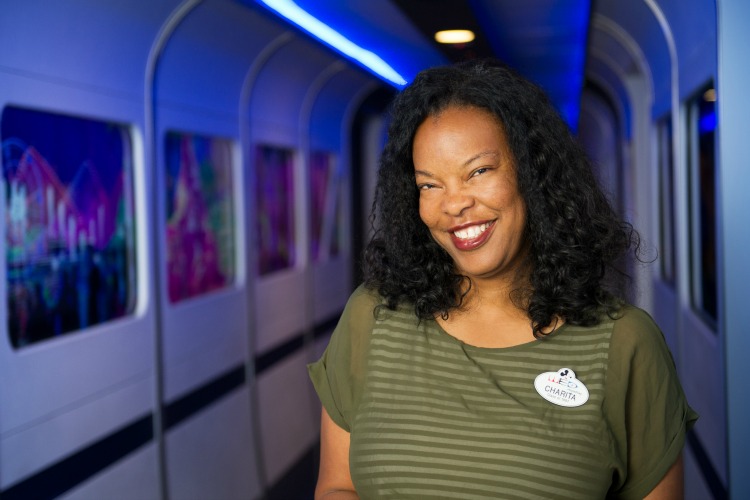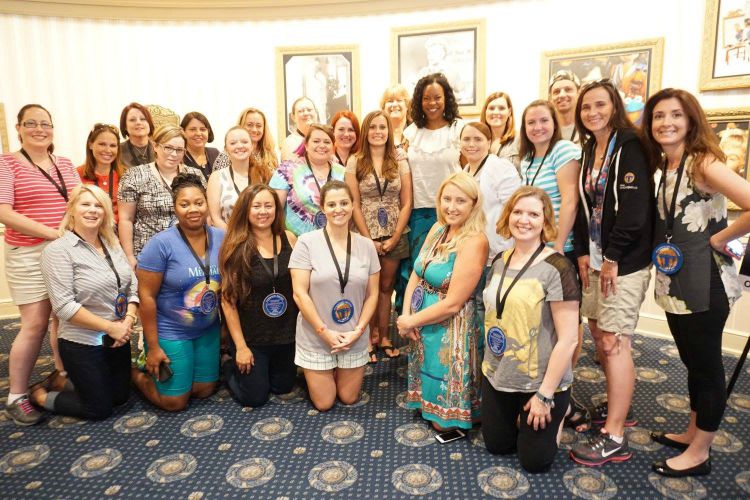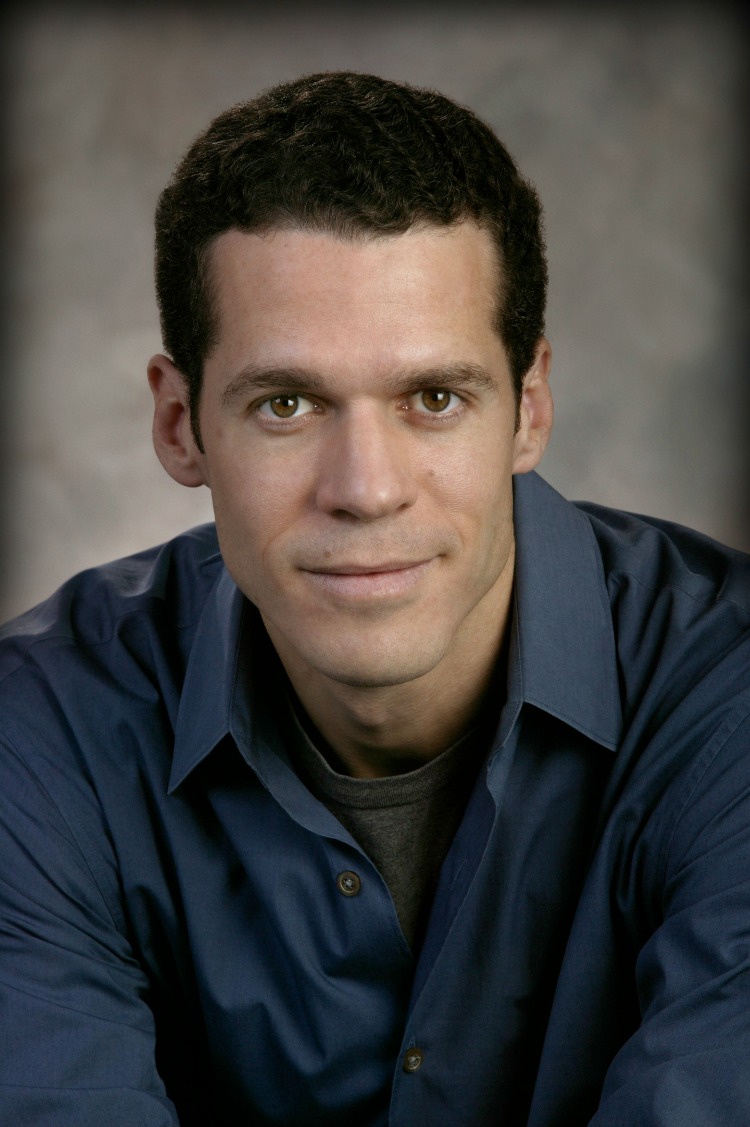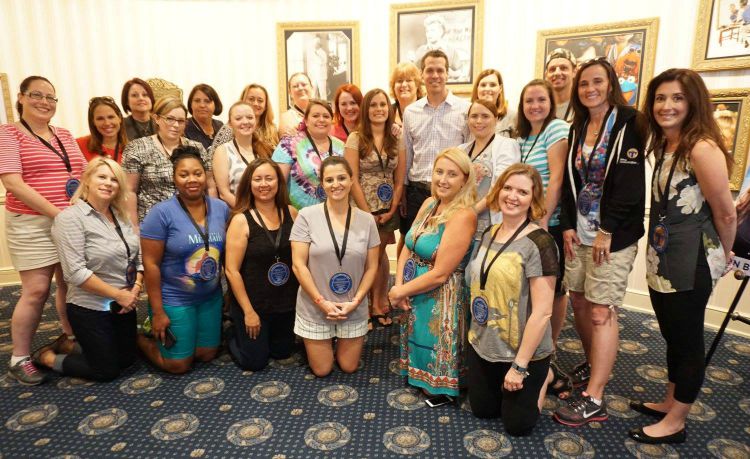Last month, we were invited to Disney Studios in California to celebrate the small screen release of TOMORROWLAND on BLU-RAY, Digital HD, and Disney Movies Anywhere Oct 13th.
In the movie Tomorrowland, we meet Casey, a teenager who catches a glimpse of a future land. She desperately searches for a way to get to this mystical place that seems free from the earthly restraints that is her frustrating life.
On her way, she meets childlike Athena (played by Raffey Cassidy) and adult Frank (played by George Clooney). They join her in her pursuit of Tomorrowland.
Enjoy our interview with Raffey to learn more about her experience in the movie.
As the story unfolds, we discover that Frank was once a hopeful and creative boy whose invention inspired others to build on their dreams. Walt Disney gazed upon his daughters on a bench one day, and envisioned Disneyland to fulfill a dream he had for families to visit a magical place and create lifelong memories.
As long as there is creativity in the world, Walt believed that Disney and its creations will continue to grow and evolve where “Dreams Come True”. Being surrounded by Walt’s vision, and all the families entranced with Disneyland Resort, it was difficult to stay grounded and avoid getting swept away by the pixie dust… gravity could not hold onto our soaring spirits.
As we toured a few of the filming locations from the movie, we were also treated to small group interview sessions with a few of the Dreamers behind the magic of Disney.
Charita Carter, Producer at Disney Imagineering, was the first Disney Visionary who we spoke with.
[Photo courtesy of Disney]
As the Senior Creative Producer and Development Manager of the Scenic Illusion Team, warm and inspirational Charita focuses on developing new tools and techniques to supply Disney designers with new and expanded capabilities for storytelling. She has developed attractions in both Walt Disney World and Disneyland Resort locations.
I was amazed to learn that she is one of the masterminds behind such memorable rides as the Indiana Jones Adventure, where the latest in technology meets the best in thrilling roller coaster rides. I will never forget, zooming around the cursed temple in our jeep/mine-cart, as images, sounds and realistic robotics thrilled us.
Here are a few highlights from that interview.
Q : What is your favorite part of your job?
CC : I always say it’s a project that I’m working on because I’m always doing something new and different… I love to trail blaze and do things for the first time.
Q : Where do you get your inspiration from?
CC : Oh my goodness, everything. I’ve had the privilege of working with a group called the Scenic Illusion Group and it’s a prototype application team and what we are known for is we really look at technologies, not just what’s being used for the entertainment industry, but we are look at what’s happening in the car industry and what’s happening you know, just everywhere and then we say we’d like to take those technologies, bring them in house and misuse them. Or abuse them, in a way that by putting, integrating different things in a unique way, you come up with something completely new and the task is to figure out how to do that and apply it to what we do in terms of our storytelling and our attractions. We have people who are looking at what’s happening in the theatrical world.
Q : How do you feel we can inspire young girls to dream big?
CC : I think it’s really important and I’m glad that Disney affords me the opportunity to get out there and to talk, because girls, kids in general, but especially girls, need role models of people doing what they’re imagining to do and sometimes, you want to encourage them to do something that nobody else has done yet. I think role models are really good. Making sure that our girls are exposed to as much as possible, you know, um, being able to have people that they, they really look up to. I think we as women, moms, big sisters, we need to really show, a fearlessness, and just show that we’re not limited by fear. We can lead by example.
Q : What’s the most exciting project that you’ve worked on in your career?
CC : I think one of the ones that comes to mind was my first, comprehensive project in the park. It was at Disney’s Hollywood Studios and it was Pirates of the Caribbean: The Legend of Captain Jack Sparrow. First of all, I did get to work with Johnny Depp. And that was exciting, but I think the thing that really excited me, too, was that it was our first opportunity to execute it and get in front of guests and then the fact that it was so well received, just made it even sweeter.
Q : What was the attraction?
CC : It was a walk-in attraction, a complete three-sixty, so as opposed to a ride that guests actually walked into a space and we used a technique that we call projection mapping. Well, we actually lit the set with projectors, so what that did was, you think you know what you’re looking at and then all of a sudden, we could bring this additional layer of animation to the space and you were completely surrounded by it and that was really exciting.
We learned that Charita was a hand model, for jewelry, Bounty, credit cards and whatnot. An agent saw her holding onto the pole on the tram, and that was the beginning of her commercial career. She was bound by contract to usually wear gloves.
Most of her experiences prepared and equipped her for the next project.
Q : What’s Imagineering like today versus when you first started?
CC : It’s very interesting because I have changed my roles several times. I started out as an accountant, and now I’m in the creative group and it’s constantly changing and we are constantly growing in the sense that we have many more parks than we had when I first started. We have really branched out, throughout Asia and all, so there’s a lot of content that’s needed. I think one of the biggest changes is that our plates are fuller, so our strategies have had to change in terms of executing our product. We get an opportunity to really mix it up with a number of different talents and that’s always been the case, but the more you’re trying to do, I think the more you get to do that, so, we’re bigger and I think we’ve got more on our plate and that’s exciting. Also, you don’t necessarily get as big as your plate, so it allows us as individuals to take on more responsibility. There is an opportunity for you to take on as much as you can possibly handle and that’s always a great environment to be in to grow and to stretch. I think that’s how it’s kind of changed over the years.
Q : What would your Tomorrowland be?
CC : Well, one thing that I really, really love in terms of entertainment is music, so I think that there, music would be kind of the forefront of what’s happening in Tomorrowland. I feel like it’s such a language that inspires people and moves people, so I would be focusing on ways that we could deliver musical offerings to our guests in unique ways. The whole transportation aspect, we joke at work… We are always trying to run around and do so many different things and I often say, I wish I had a hover craft. My Tomorrowland would have a hover craft, so that we can do more things and I think also, I’d love to get some attention in my Tomorrowland to really help people unplug because we do live in such a fast-pace, information overload world. I think we want to make sure that we’re advancing the future. That we’re not neglecting the ability for people to really just unplug, be creative, and really communicate. Know who they really are. Because those are the things that drive innovation and creativity, so we’d want to make sure that those things are intact in the next Tomorrowland.
Charita was energetic, friendly and inspiring. I look forward to watching her projects grow.
Next, we chatted with Mike Goslin. He is the VP of Production & Content at Disney Consumer Products.
[Photo courtesy of Disney]
Mike is currently working on the next step in the evolution of physical play: Playmation.
We enjoyed hearing about the toy development and how Mike uses his creativity to continue Walt Disney’s legacy.
Q : Tell us about Playmation.
MG : Playmation is a new kind of play system. It’s a combination of ‘wearables’ and toys that all connect to each other to create a new kind of experience. What we’re essentially doing, is taking old school play, when kids used to run around outside, and use their imagination and climb trees and run around actively and we’re bringing it into the 21st century using technology. We’re giving kids superhero powers for real in the real world using these devices.
We’re starting off with Ironman’s Repulsor. So imagine if you can put on repulsor gloves and battle robot. A physical robot across the inside. So I fire at it and I feel it kick in the palm of my hand. It makes the new shing sound effect, lights strip down my arm. The robot over there shakes and falls over when I feed it. It’s all happening in my imagination and using audio I get lighting effects.
Q : Is it a 2-piece set? Does it resemble the hand, in addition to the robot or does it translate to other objects?
MG : There are lots of objects. All surrounding you, and contributing to a synchronized experience.
We do like testing with lots of kids. We bring them in all the time, both boys and girls. Surprisingly girls like to be super heroes too.
Q : What is the inspiration for this?
MG : The inspiration was we started off thinking, what can we do with the Internet of things. I don’t know if you’ve heard the term, but as devices have these capabilities that start getting cheaper and more powerful what, what do you do if you could have a bunch of things connected to each other?
At the same time we were doing lots of talking to kids about what their favorite things to do are. Kids in the 6 to 12 range, especially boys, their #1 thing they love to do is role-play as a superhero. So we thought, okay we use this technology to give them superpowers? That was kind of the inspiration and that’s where we started.
Q : What were your favorite video games as a kid?
MG : I had an Intelevision so I played a lot of Intellivision. I played IntellivisionFootball. I played that a lot. I was terrible.
I also grew up in an Arcade. Pac Man, Donkey Kong. I really liked Galaga. I loved Galaga, Defender…
Centipede. I still like that. I still play those games.
Q : Did you always have computers as a kid?
MG : I did, although I didn’t get into Computer Science until kinda’ late.
I was doing a lot of art and my undergrad was Art and Psychology. And then I went back and I was in a PhD program in Computer Science. Technically I’m on leave from my program. I got a Master’s Degree and I got the job at Disney and didn’t go back.
Q : What advice do you have for aspiring students?
MG : Math is really important.
You know if you’re doing computer, especially visual computer, math is incredibly important and I use it all the time. The psychology is really useful too because game design is about teaching how to play a game. Understanding how to do statistical research and everything is real important.
Also understanding Learning Theory and rewards and all is very much psychology. I would say that if you really are passionate about games, then technology’s a great place, but everything helps.
Don’t focus too much too early, because I used stuff from English Lit, psychology, history and everything all the time.
It all comes together. At the end of the day you’re still telling stories and, and so you need to you know understand what’s come before and, and you know hopefully stand on their shoulders.
Q : What was kind of your inspiration?
MG : When I look back on my childhood I was always building stuff. I was building virtual worlds before there were such things. I was doing them out of cardboard and, and you know I was always the one saying, “Hey, let’s go build a fort or a treehouse whatever.”
I think technology came along that made it possible to do in a totally over the top way. And so I kinda’ fell into it. It’s very natural. I didn’t have a master plan ‘cause it didn’t exist back then, but I knew I wanted to entertain people and create these immersive kind of worlds.
I think the key is to empower kids right? And so even though we’re entertaining them, we wanna’ give them to tools to entertain themselves because first of all, they can do it better. They say that play is the work of kids, right? They are professionals at it. Anything we can do to empower them is great.
Q : How does this game stand out when we have so many games that are coming out?
MG : We bring in kids and parents and we did extensive play-testing and, watching the parents watch their kids – you can see the moment when they see their kids and they’re like, “Boy you know my son is IN that world right now.”
You could see it by their eyes, and the way they’re acting and stuff. I think what’s gonna’ make it stand out is that without relying on a screen — and I’m not anti-screen. I think screens are great and very compelling, but the fact that they are really in their heads and doing this really physical play and they’re sweating and they’re coming out of there saying, “Wow! I feel like I’ve been playing this for 30 minutes and it’s only been a few minutes.
It’s very different that way and I think it looks familiar in some ways. Its kinda’ this nostalgic idea of how play used to be, but now we’re sort of super-charging it.
Q : How has your experience been at Disney?
MG : Disney’s great because Disney is a company that actually dreams. They are trying to come up with new things to do. So, it’s part of the culture, and that attracts people that are all alike.
When I was growing up it was like me and maybe a couple of other kids. Here it’s like they got them all together in one place. I’m constantly just humbled by the people that I get to work with and they’re experts in all sorts of things. When you get a bunch of people pointed in the same direction, you can do amazing stuff.
When you combine that with having these great recognizable characters and fantastic worlds, it’s sort of unique in the sense that they’ve got all that in one place.
Q : Does the pulsar hand work against the Thor shield?
MG : We’re workin’ on future stuff. We haven’t talked about that yet but we do wanna’ bring in all the Avengers right ‘cause you wanna’ team up. Part of being an Avenger is being on the team.
We’ll start off with with Ironman and Hulk.
It’s fun empowering the kids.
Whatever they wanna’ do, we wanna’ get out of their way – if they wanna’ play a certain way. We just wanna’ give them the tools.
Q : When is Playmation being released?
MG : We announced this summer and it’s gonna’ be on shelves in 2 weeks.
We’re in all the Targets and Wal-Marts, etc. and Disney Store of course.
We’ve been making it available in the stores so that people will be able to try it out, then understand what it is that we’re doing.
We’ve already announced that we’re doing Star Wars next so that would be next year. So you get to be a Jedi. Then Frozen for 2017 – we’ve already done that one too.
Q : What age range are you aiming for?
MG : So Avengers, we targeted 6 to 12.
And really 7, 8, 9 is the sweet spot, but we made it so that it will fit younger arms and also adult arms.
Everybody wants to be a superhero and have Ironman armor. We designed it to work for boy and girl, young and old.
Q : What did it feel like to see a kid play the game for the first time?
MG : It was my kid. It was very amazing. I brought him and we made a video to sorta’ show what it could be and he was just like “wow”. When you find it the first time, you always see this look. You know kids can still be amazed. Their jaw will actually just like hang open when they fire it for the first time. It looks a little bit like a weapon.
Part of the empowerment is that this isn’t a toy. Tony Stark made this and you gotta’ help the Avengers. We’re recruiting you to join the Avengers ‘cause they need help. Voltron’s back and is overwhelming the Avengers and so they’re recruiting new superheroes and it’s equipping them and training them to get in on the field.
It feels solid and the audio is amazing.






Leave a Reply